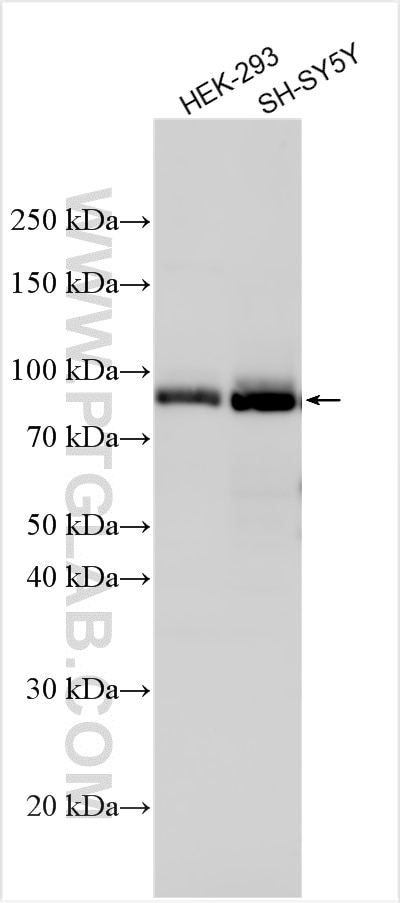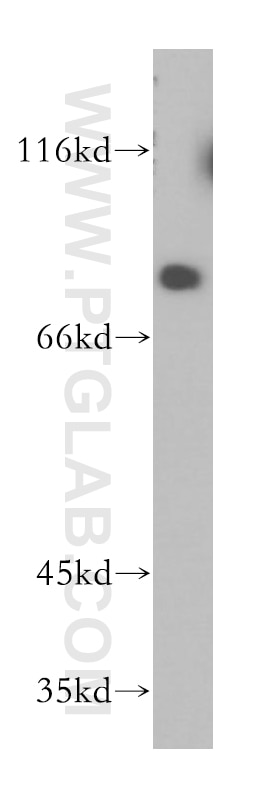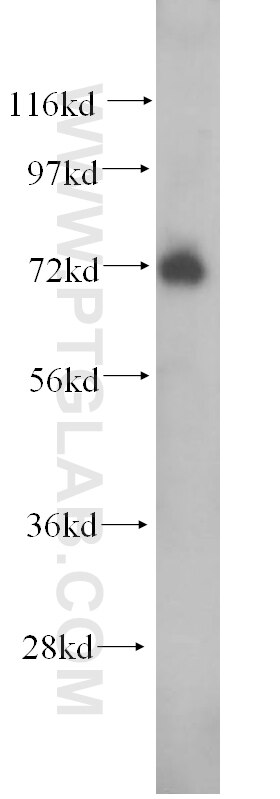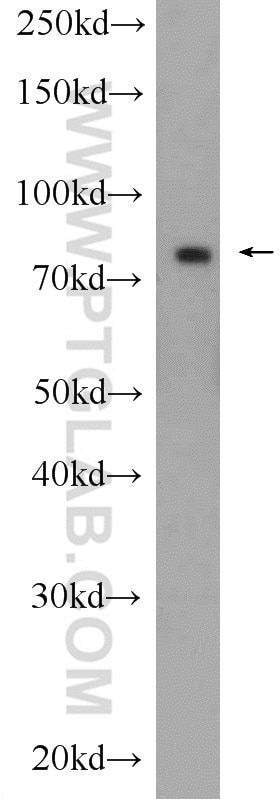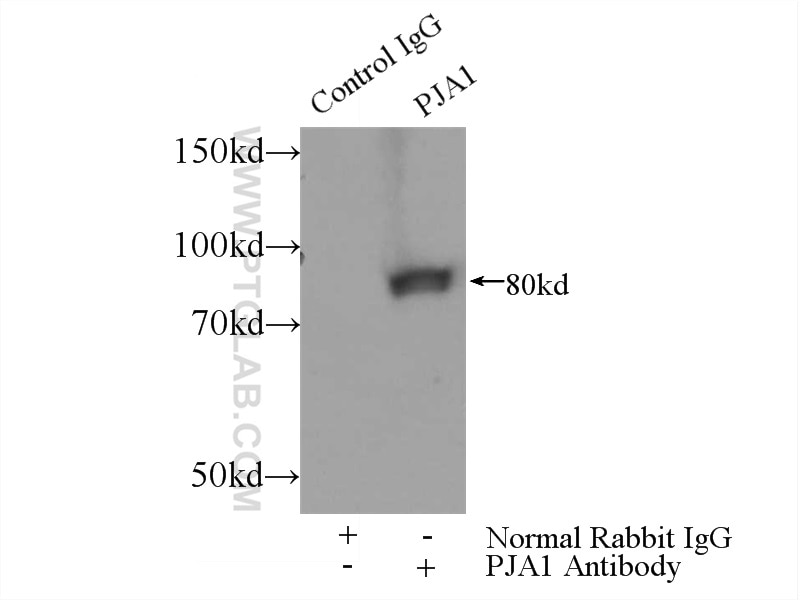- Featured Product
- KD/KO Validated
PJA1 Polyklonaler Antikörper
PJA1 Polyklonal Antikörper für WB, IP, ELISA
Wirt / Isotyp
Kaninchen / IgG
Getestete Reaktivität
human, Maus, Ratte
Anwendung
WB, IF, IP, CoIP, ELISA
Konjugation
Unkonjugiert
Kat-Nr. : 17687-1-AP
Synonyme
Geprüfte Anwendungen
| Erfolgreiche Detektion in WB | HEK-293-Zellen, Maushirngewebe, Rattenhirngewebe, SH-SY5Y-Zellen |
| Erfolgreiche IP | Maushirngewebe |
Empfohlene Verdünnung
| Anwendung | Verdünnung |
|---|---|
| Western Blot (WB) | WB : 1:2000-1:12000 |
| Immunpräzipitation (IP) | IP : 0.5-4.0 ug for 1.0-3.0 mg of total protein lysate |
| It is recommended that this reagent should be titrated in each testing system to obtain optimal results. | |
| Sample-dependent, check data in validation data gallery | |
Veröffentlichte Anwendungen
| KD/KO | See 3 publications below |
| WB | See 7 publications below |
| IF | See 2 publications below |
| CoIP | See 1 publications below |
Produktinformation
17687-1-AP bindet in WB, IF, IP, CoIP, ELISA PJA1 und zeigt Reaktivität mit human, Maus, Ratten
| Getestete Reaktivität | human, Maus, Ratte |
| In Publikationen genannte Reaktivität | human, Maus, Ratte |
| Wirt / Isotyp | Kaninchen / IgG |
| Klonalität | Polyklonal |
| Typ | Antikörper |
| Immunogen | PJA1 fusion protein Ag11820 |
| Vollständiger Name | praja ring finger 1 |
| Berechnetes Molekulargewicht | 643 aa, 71 kDa |
| Beobachtetes Molekulargewicht | 71-80 kDa |
| GenBank-Zugangsnummer | BC075803 |
| Gene symbol | PJA1 |
| Gene ID (NCBI) | 64219 |
| Konjugation | Unkonjugiert |
| Form | Liquid |
| Reinigungsmethode | Antigen-Affinitätsreinigung |
| Lagerungspuffer | PBS with 0.02% sodium azide and 50% glycerol |
| Lagerungsbedingungen | Bei -20°C lagern. Nach dem Versand ein Jahr lang stabil Aliquotieren ist bei -20oC Lagerung nicht notwendig. 20ul Größen enthalten 0,1% BSA. |
Hintergrundinformationen
PJA1(E3 ubiquitin-protein ligase Praja-1), also named as RNF70, regulates the level of PRC2 (polycomb repressive complex 2) by targeting its free subunits for Ub-mediated proteasomal degradation and it can be involved in protein ubiquitination in the brain and is a suitable candidate gene for MRX(PMID:12036302). The Praja1 protein is unlikely to be a membrane receptor, since it lacks a hydrophobic transmembrane domain(PMID:9393880). It has 3 isoforms produced by alternative splicing with the molecular weight of 71 kDa, 50 kDa and 65 kDa.
Protokolle
| PRODUKTSPEZIFISCHE PROTOKOLLE | |
|---|---|
| WB protocol for PJA1 antibody 17687-1-AP | Protokoll herunterladen |
| IP protocol for PJA1 antibody 17687-1-AP | Protokoll herunterladen |
| STANDARD-PROTOKOLLE | |
|---|---|
| Klicken Sie hier, um unsere Standardprotokolle anzuzeigen |
Publikationen
| Species | Application | Title |
|---|---|---|
Nat Commun Praja1 E3 ubiquitin ligase promotes skeletal myogenesis through degradation of EZH2 upon p38α activation.
| ||
Ann Clin Transl Neurol A recurrent PJA1 variant in trigonocephaly and neurodevelopmental disorders. | ||
Biochim Biophys Acta Mol Cell Biol Lipids Diacylglycerol kinase δ destabilizes serotonin transporter protein through the ubiquitin-proteasome system. | ||
J Virol PJA1 Coordinates with the SMC5/6 Complex to Restrict DNA Viruses and Episomal Genes through Interferon-independent Manner. | ||
Neuropathology Praja1 RING-finger E3 ubiquitin ligase suppresses neuronal cytoplasmic TDP-43 aggregate formation. | ||
Neuropathology Praja1 RING-finger E3 ubiquitin ligase is a common suppressor of neurodegenerative disease-associated protein aggregation. |
